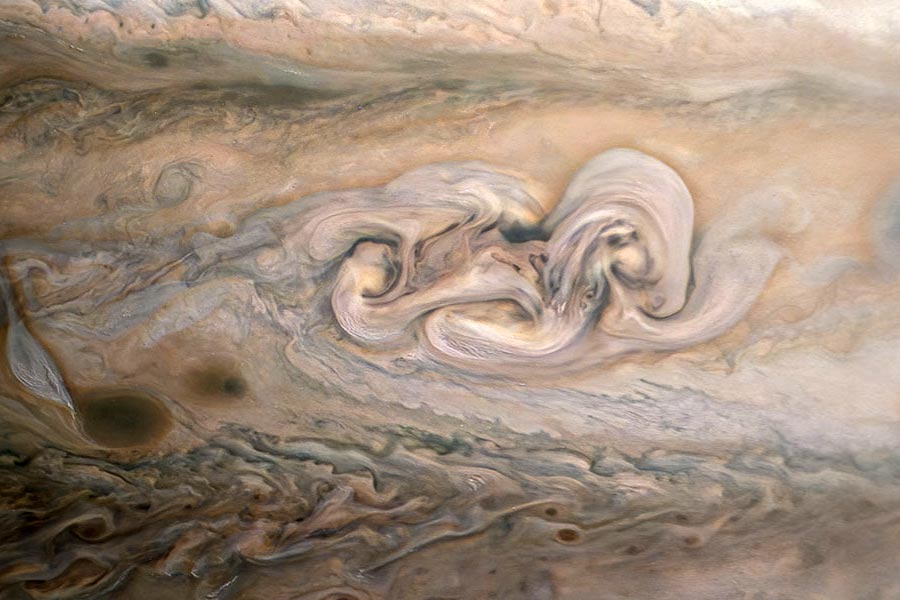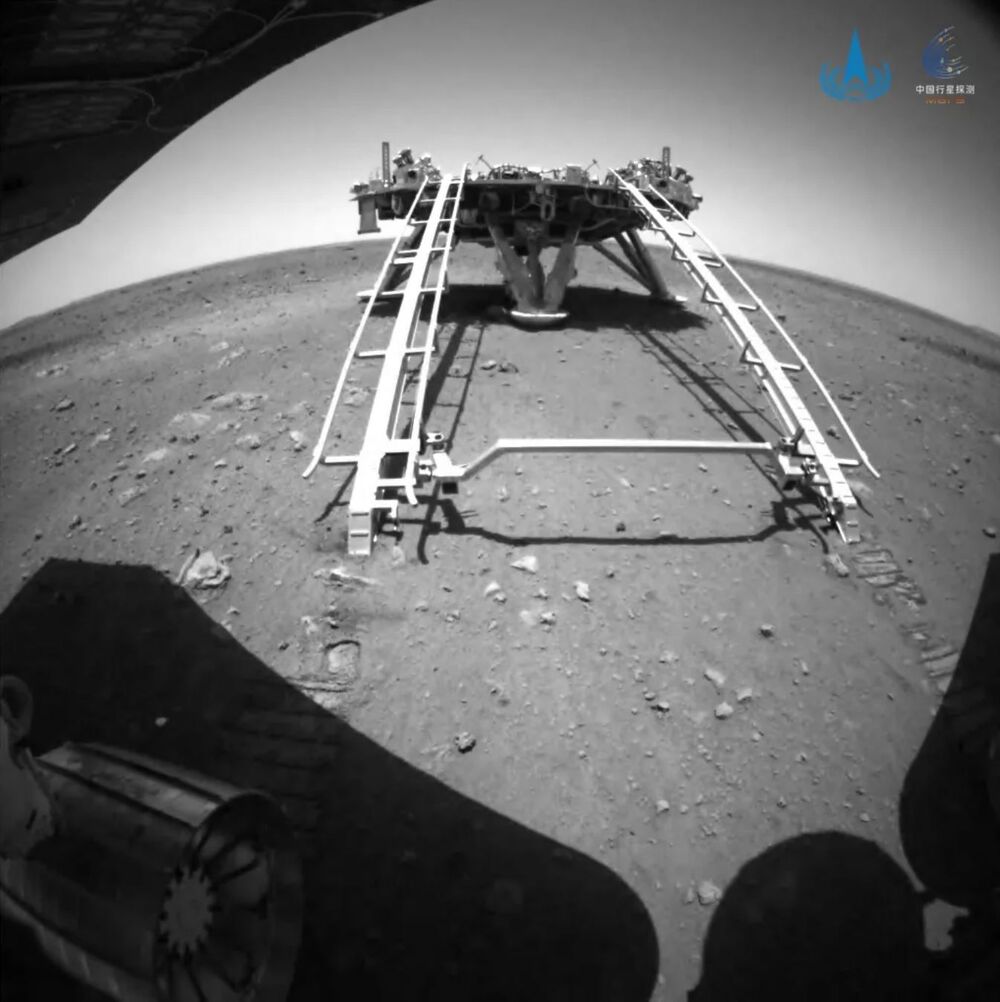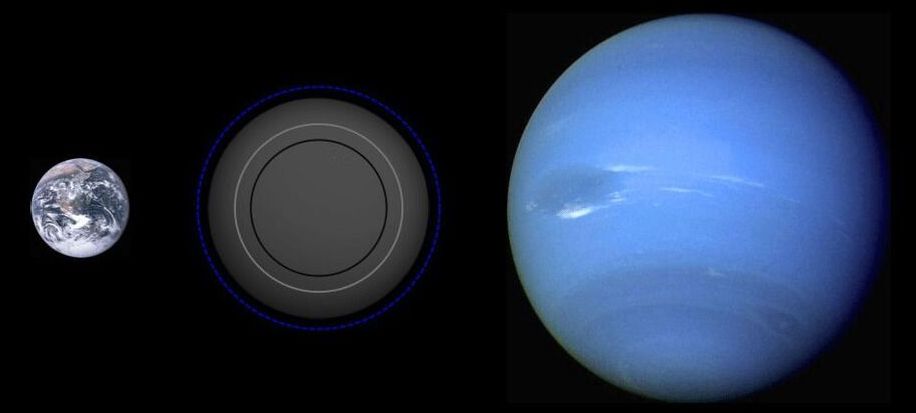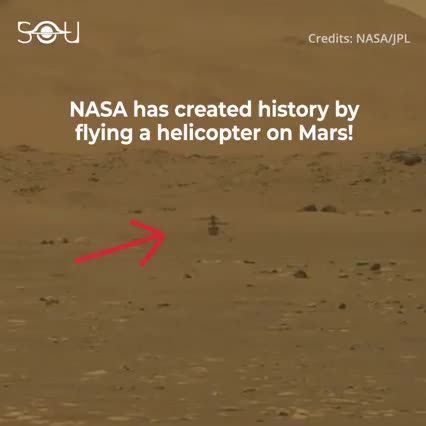To better understand the universe, we may need to kill off one of the most important theories of all time.



Many features in Jupiter’s highly dynamic atmosphere are short lived, but the April 2021 observation from the JunoCam instrument (top image) revealed that nearly one year after its discovery, the remnant of Clyde’s Spot had not only drifted away from the Great Red Spot but had also developed into a complex structure that scientists call a folded filamentary region. This region is twice as big in latitude and three times as big in longitude as the original spot, and has the potential to persist for an extended period of time.
The lower image was taken on June 2, 2020, around 3:56 a.m. when the spacecraft was about 28000 miles (45000 kilometers) from Jupiter’s cloud tops. The upper image was taken on April 15, 2021, at 4:58 p.m. PDT (7:58 p.m. EDT). At the time, the spacecraft was about 16800 miles (27000 kilometers) from Jupiter’s cloud tops, at a latitude of about 30 degrees South. Another citizen scientist, Kevin M. Gill, processed both images from raw JunoCam data.
JunoCam’s raw images are available for the public to peruse and process into image products at https://missionjuno.swri.edu/junocam/processing. More information about NASA citizen science can be found at https://science.nasa.gov/citizenscience and https://www.nasa.gov/solve/opportunities/citizenscience.

Virgin Galactic on Saturday made its first rocket-powered flight from New Mexico to the fringe of space in a manned shuttle, as the company forges toward offering tourist flights to the edge of the Earth’s atmosphere.
High above the desert in a cloudless sky, the VSS Unity ignited its rocket to hurtle the ship and two pilots toward space. A live feed by NASASpaceFlight.com showed the ship accelerating upward and confirmed a landing later via radar.
Virgin Galactic announced that its VSS Unity shuttle accelerated to three times the speed of sound and reached an altitude of just over 55 miles (89 kilometers) above sea level before making its gliding return through the atmosphere.


Today we discuss Mars surface conditions with the villain from a 90s Kid’s movie. I also get mad (but not in a technical way). Apologies for this one.
The next one will be on Space Guns and Jules Verne which is more fitting for the channel.
Transition footage and thumbnail image are from the Jet Propulsion Laboratory. Perseverance and Ingenuity are nifty.
The Articles in Question (Don’t Contact the Authors):
“Mars is a Hellhole”
https://www.theatlantic.com/ideas/archive/2021/02/mars-is-no-earth/618133/

HELSINKI — China’s Zhurong rover descended onto the surface of Mars late May 21, a week after the vehicle’s historic landing in Utopia Planitia.
The China National Space Administration (CNSA) announced Saturday that the six-wheeled Zhurong had reached the surface at 10:20 p.m. Eastern Friday.
The rover will now begin science and exploration tasks in Utopia Planitia with six science payloads, including optical and multispectral cameras and ground-penetrating radar.

Researchers at the Flatiron Institute’s Center for Computational Astrophysics published a paper last week that just might explain a mysterious gap in planet sizes beyond our solar system. Planets between 1.5 and 2 times Earth’s radius are strikingly rare. This new research suggests that the reason might be because planets slightly larger than this, called mini-Neptunes, lose their atmospheres over time, shrinking to become ‘super-Earths’ only slightly larger than our home planet. These changing planets only briefly have a radius the right size to fill the gap, quickly shrinking beyond it. The implication for planetary science is exciting, as it affirms that planets are not static objects, but evolving and dynamic worlds.
Exoplanet research is a very young field. As recently as 1992, no one had ever seen a planet beyond our solar system. Today, we’ve discovered more than 4700 of them, and that number is growing rapidly due to the efforts of dedicated planet-hunting space telescopes like Kepler (now defunct) and its successor, TESS. We’ve suddenly gained an enormous new sample size of planets to study, beyond the eight planets (sorry Pluto) that orbit around our sun.
Kepler, TESS, and other planet hunters have discovered brand new types of planets, like so-called ‘hot-Jupiters,’ large gas giants that orbit very close to their star. These were among the first exoplanets observed because their large size made them easy to find, and their small, fast orbital periods meant we could see them pass in front of their star more than once in a short period of time (some hot-Jupiters have a year that lasts only a few Earth days).

Technology around space travel is accelerating at a rapid pace. As a result, we may soon see a future where one doesn’t need to be an astronaut to travel the stars. But there’s a long line of legal and safety logistics to be met before we can all start booking our personal space voyages.
#Space #Accelerate #BloombergQuicktake.
——-
Like this video? Subscribe: http://www.youtube.com/Bloomberg?sub_confirmation=1
Become a Quicktake Member for exclusive perks: http://www.youtube.com/bloomberg/join.
QuickTake Originals is Bloomberg’s official premium video channel. We bring you insights and analysis from business, science, and technology experts who are shaping our future. We’re home to Hello World, Giant Leap, Storylines, and the series powering CityLab, Bloomberg Businessweek, Bloomberg Green, and much more.
Subscribe for business news, but not as you’ve known it: exclusive interviews, fascinating profiles, data-driven analysis, and the latest in tech innovation from around the world.
Visit our partner channel QuickTake News for breaking global news and insight in an instant.

“Never, never ask me for a shortcut.” her mom said while she was growing up.
MiMi Aung (born 1968) is a Burmese 🇲🇲 American engineer and project manager at Jet Propulsion Laboratory (JPL).
She is the lead engineer on the Mars Helicopter Ingenuity, the first extraterrestrial aircraft which landed on Mars today.
She was inspired by her mother to study science, maths and engineering. Her mother was the first woman in Myanmar to get a PhD in mathematics.
She tested the technology she and her colleagues developed for seven years at NASA.
Mars’ atmosphere is a lot thinner than Earth’s. This means to keep the helicopter in the air, the blades must spin very fast and it can’t weigh more than 2 kilograms.
Ingenuity’s mission on Mars is to help Perseverance find the best routes around Mars.
“The most important thing is to understand the fundamentals and know what your goals and strengths are. Then work hard on it. You have to know that like my mother said, there are no shortcuts for success,” she said.
The last photo? She wrote a speech in case the mission fails. She tore it.
Congratulations.
#nasa #engineering #space #ingenuity.
Credit: all images’ owners.
